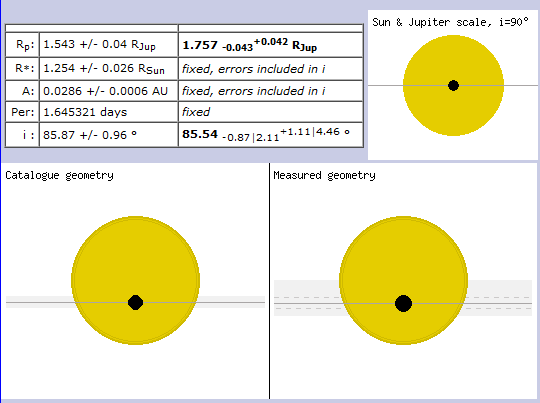Report by Thomas Grunge 10.Feb. 2022
In the summer months of June to August, the extended constellation Draco (Drachen) is especially high in the northern sky. It surrounds the little bear with our North Pole Star by more than 120°. Northern latitudes of 50 degrees show the constellation circumpolar. This ensures good visibility even at the beginning of winter. In the constellation Draco you can find exoplanets that are particularly bright. They can therefore be easily photometrized with small apertures.
The exoplanet Qatar-10b is quite new. It was discovered in 2019 and confirmed.

About 1823 light-years away from us, the exoplanet Qatar-10b orbits the star UCAC3 320-60170 . The star has the spectroscopic classification of F7V and a visual magnitude of V 12.8 mag. With an effective surface temperature of about 6125K, it is about 500K hotter than our sun.
Qatar-10b is a so called „Hot Jupiter". Its very high average surface temperature of about 2000K is due to the small distance to the home star. This is only 0.0286 AU (4.3 million km). Our Mercury is 0.39 AU (58 million km) away from the Sun.
Qatar-10b orbits its host star in just 1.65 days in an orbit inclined 14.1° to our line of sight. Seen from Earth, it therefore passes in front of its home star. In this so-called "transit" the brightness of the star is slightly lowered for about 2.5 hours.
If you compare with Jupiter, Qatar-10b is about 50% larger, but has only 73% of Jupiter's mass.

For several years I have been using a 7" Maksutov F/10 with a SBIG St10xme on a Losmandy G11 mount for exoplanet hunting and variable photometry. A setup that has proven itself and can be set up within 10 minutes. The telescope can then be remotely controlled from the warm couch (couchobserver ;-)).

The contol of camera and mout was managed by AstroArt8 software.
Exact transit forecast can be found on astro-swarthmore.edu .
Imaging:
From 20:30 to 01:40, at 02-03.10.2022,
75×240 s Lights 1×1 @-15°C Luminanzfilter,
10×240 s Darks,
10×5 s Flats,
10×5 s Flatdarks.
Evaluation:
With Muniwin the series of images was processed and the light curve was created.
This software can also be used to create the appropriate data set for the "Exopanet Transit Database" .

The Lightcurve of Qatar-10b transit. has been added to the "Exopanet Transit Database".
With our own lightcurve the planetary radius, transit duration and transit center, the inclination and system geometry were calculated.

It is also possible to compare and classify your own measurements.
The figure below shows the difference between the own transit center (blue) and the calculated transit center. A positive difference can be seen.
Furthermore, the own measurement agrees well with the other measurements.
I will repeat the photometry of Qatar-10b in a year to see if the difference continues to widen or shrink again. If, for example, there are periodic changes in the diagram over a longer period of time, another exoplanet may be involved. It remains exciting!

Even though it has become a bit routine, the exoplanet hunt still excites me. As an amateur, we can thus understand the measurements of the professionals. By publishing the own data in databases, even amateurs can make a small contribution to research.
Greetings out of the "boundless vastness"